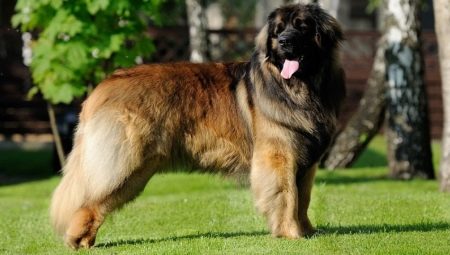Leonberger is one of the oldest dog breeds, but despite this, he is not well known to our compatriots. However, due to the growing interest of dog breeders in rare breeds, many breeders began to look closely at these unique dogs.
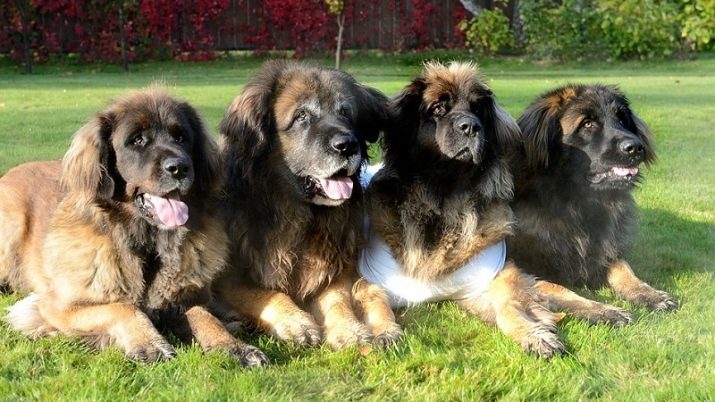

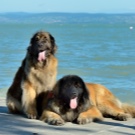
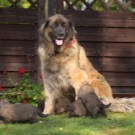
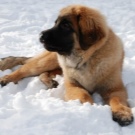
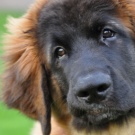
Origin history
Leonberger belongs to those breeds that have experienced dizzying take-offs and undeserved oblivion in the history of their existence. The breed managed to try on the role of the favorite of kings, to be a status dog in the circles of aristocrats, and become the object of criticism and ridicule from dog handlers and dog breeders. In connection with such a rich history of ups and downs, the number of livestock either approached the mark of several million individuals, then suddenly rolled down and was on the verge of extinction.
It all began in the small German city of Leonberg, which translates as “the city of the lion." It was there, in the 30s of the XIX century, the breeder-canine breeder Heinrich Essig came up with the brilliant idea of creating a living symbol of the town. The main priority was to get a breed that looks like a lion, which would fully correspond to its name.
The scientist was so inspired by this idea that after a trial crossing of a black and white landseer and long-haired Saint Bernard, he continued to cross their offspring with other large breeds.

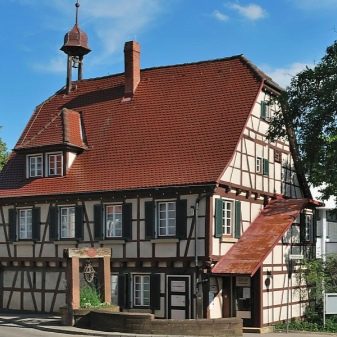
At the final stage of the experiment, Essig again attracted a St. Bernard, and then a Pyrenean mountain dog, to breed.The result was not long in coming, and a large silver-gray puppy with a black head and the same ears was born. The newborn was fully consistent with the scientist's ideas about the new breed, as a result of which breeding experiments were stopped, and in 1848 the breed was given the proud name - Leonberger. Then there was a rapid take-off, a new breed quickly became popular and won the hearts of dog breeders throughout Europe.
However, the story of the origin of Leonberger did not end there, but received an unexpected continuation. Immediately after the death of the breeder, the German dog specialist Strebel questioned the participation of St. Bernard in the formation of the breed. In his opinion, exclusively alpine mountain dogs were used as grandparents, which are distinguished by their huge size and attractive appearance. The opinion of Strebel was shared by many authoritative experts, among whom were world-famous cynologists: Luket, Leonard and Likhbor.
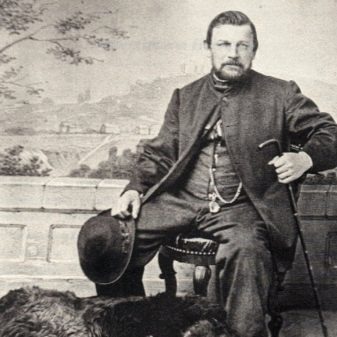
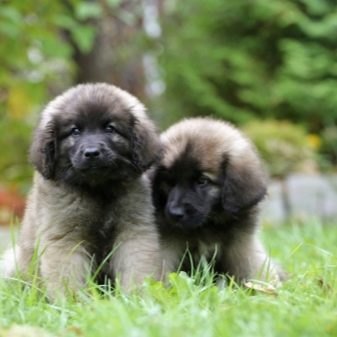
However, this is not all. A third version appeared a little later, which was based on the story that three centuries earlier similar dogs were seen at horse fairs and were very popular among shepherds and peasants. This valuable information was obtained from the diary of the rich princess, who in her notes referred to huge dogs, described by description of Leonberger. She wrote that animals were favorites of the local nobility and were bred in elite nurseriesIn addition, there is evidence that back in the 18th century, Marie Antoinette became the owner of a huge, lion-like dog.
However, in the 19th century, shortly before the start of Essig’s official breeding experiments, a plague raged in Europe, affecting a large number of domestic animals. The infection did not pass by the huge beautiful dogs, of which only a few individuals survived who lived in the kennel of the monastery. According to the third version, it was from these dogs that Essig restored the once existing breed, and did not create a new one. However, for commercial purposes, it was more profitable for the cynologist to position the dogs as representatives of a new breed that he had just created, rather than the descendants of the well-known and once revered dogs in Europe.
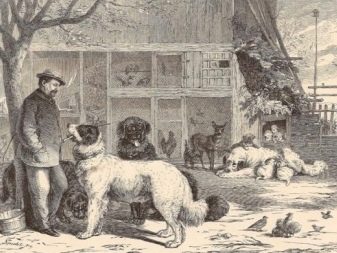
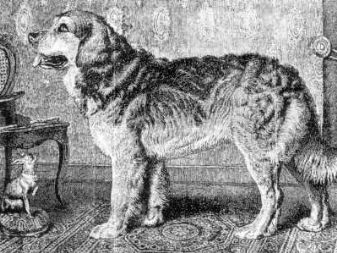
It is known that puppies were sold to them for a fabulous price, only thereby fueling the interest of the layman in dogs.
Nonetheless, after the death of Essig, the breed’s popularity declined, and, moreover, the dog breeders began to mock her. Such events were due to the fact that the breeder did not leave not only the exact breed standard, but also documents confirming the results of breeding experiments, indicating the breeds of the parents and a description of the puppies received from them. This was quickly exploited by scammers, who, under the guise of Leonbergers, began to sell various dogs that have a distant resemblance to the original and large sizes. As a result, the breed was in complete decline, and interest in it almost died away. But at the end of the XIX century, thanks to the creation of a tribal club, the Leonberger reappeared in sight.
Thanks to the efforts of dog enthusiasts, the breed population began to grow and be in demand among dog breeders. So, in 1895, dog specialist Albert Kull prescribed the standard, and 10 years later the breed was recognized by the International Cynological Organization.
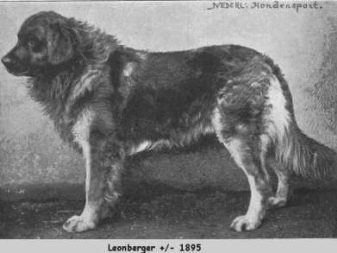
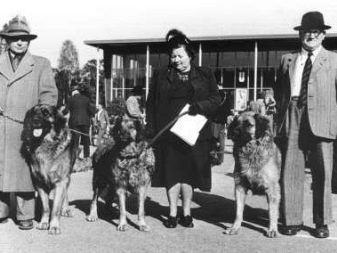
However, after the sad events of the First and Second World Wars, the Leonberger again found themselves on the verge of extinction. According to German sources, in the world at that time only 3 purebred individuals were preserved, of which, through the efforts of the breeders, the breed was restored.
In our country, Leonberger is still one of the rarest dogs, however, the positive dynamics of growth in the number of livestock is still traced. Concluding the story about the origin of this noble and distinctive dog, one cannot help but say that at that time such outstanding personalities as Napoleon III, Prince of Wales, Nicholas II and Richard Wagner were fans of this breed. And in the Austrian capital, to this day, a sculpture of the Empress Elizabeth of Baden with several Leonbergers has been preserved.
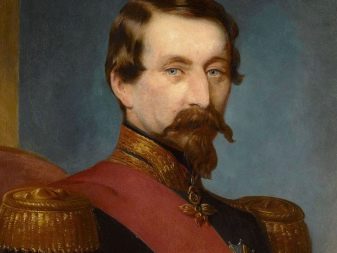
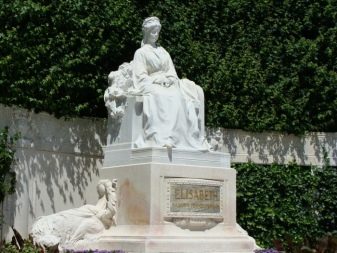
Description
Leonberger is a large stocky dog, with a voluminous mane on his head and a black mask on his face. Outwardly, the animal resembles a small lion and looks quite intimidating. Male growth varies from 72 to 80 cm, bitches - from 65 to 75 cm, which makes the breed one of the largest dogs. The weight of adults is also impressive, and in large males it can reach 72 kg, in females - 60.
Leonberger's head is quite large, and correlates with the body in the correct proportion, the length of the muzzle is approximately equal to the length of the skull, the feet are expressed smoothly, although it can be seen very clearly. On the broad and slightly convex muzzle on the sides, cheekbones are well manifested, and strong jaws have a set of 42 teeth. The bite in most individuals is scissor-like, with a dense overlap of the lower teeth by the upper, however, dogs with a direct bite are occasionally found. The lips of Leonberger have black pigmentation and fit snugly on the teeth. The nose is black and wide, the nostrils are open. Not too large oval eyes are always dark brown in color and set at the level of the foot. The triangular fleshy ears are located quite high, have an average length and hang freely.
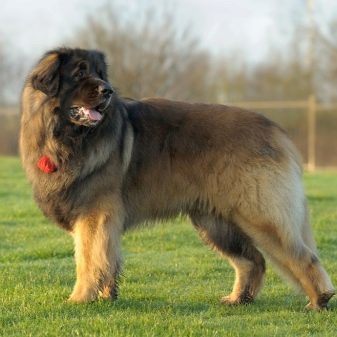
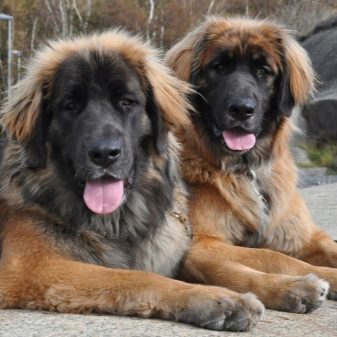
By their physique, Leonberger belong to dogs of a square format, although they have a slightly elongated body, the length of which corresponds to a height at the withers of 10: 9. Dogs are well-built and have well-developed muscles, strong bones, a wide and even back, and an elastic waist. The withers are clearly visible, the chest is deep and wide, the stomach is tucked up, the neck has no suspension and looks slightly elongated. The tail of the Leonberger at rest is freely hanging down, quite long, and set below the line of the hull. When the animal is in motion, it rises and bends slightly, but in general it still remains below the back line. Long legs on erect joints are parallel, fingers are gathered in a strong lump and have sharp claws.
Leonberger wool is stiff, not prone to breaking up into partings. On the tail, as well as in the head and chest, the length of the hair significantly exceeds their length in other parts of the body. Separately, it should be said about the color.

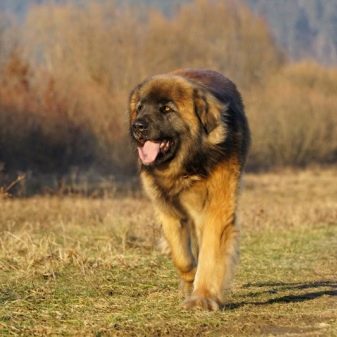
Initially, at the dawn of the formation of the breed, most of its representatives were born with silver-gray coat color.
However, yellow-brown individuals, which looked very much like lions, were of great value. Over time, shades of sand with brown strands were selectively fixed, gray specimens began to be found less and less, and in 1973 they were completely excluded from the main breed standard.
At the moment, according to the classification of the International Cynological Federation, Leonberger belong to group 2, including pinschers, schnauzers, molosses, mountain and Swiss cattle dogs, and consist in the molosses section. The average cost of a puppy that does not have documents confirming the pedigree is 30 thousand rubles, a puppy of a pet class - 40 thousand, a bride class - 45, and a show class - 50 thousand rubles.
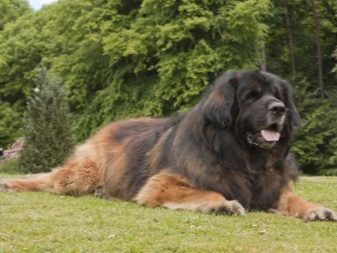
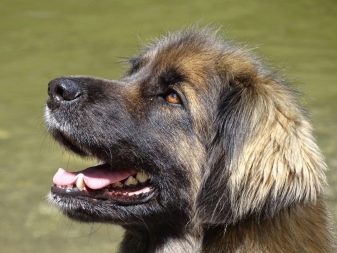
Character Features
Leonbergers are dogs whose frightening appearance hides a good, calm disposition and phlegm. Dogs are completely devoid of aggressiveness and absolutely not prone to domination. The pet will never resist the orders of the owner and fight with him for leadership. In relation to other domestic animals, the dog is very peaceful and good-natured, and will never offend a cat or a dog that accidentally wandered into the yard.This is largely due to the complete lack of hunting instinct and a mild character.
Moreover, the Leonberger has a fairly high intelligence, excellent security qualities and adequately evaluates what is happening around. In the first place he has a family, for which the dog feels a great responsibility. Therefore, if any danger arises, the pet quickly assesses the reality of the outgoing threat, and if necessary, immediately proceeds to protect the household and protect the household property entrusted to it. In order to repulse an attacker, the dog often does not have to do anything at all, since only the formidable appearance and the impressive dimensions of the shaggy guard force the ill-wishers to flee.
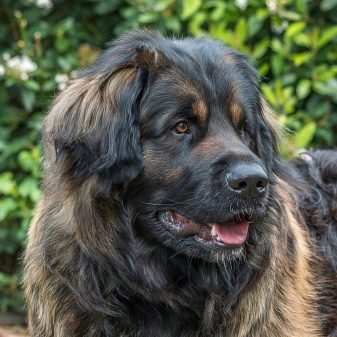
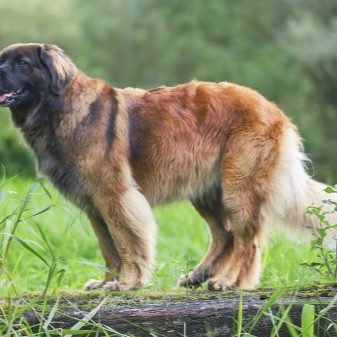
Representatives of this breed need human communication, are able to listen and empathize. If you do not communicate with the dog for a long time, then it can become lethargic and detached, therefore, when deciding to take a Leonberger, this moment must be taken into account. It’s impossible to just put the dog on a chain and force to guard the site, since the Leonberger is, first of all, a companion, interlocutor and reliable friend, and only then a guard. Of particular note is the balance of the Leonberger, which allows them to remain calm and equanimity, even if there is a lot of fun around or a noisy event. As long as nothing is in danger to its owners, the pet will lie quietly on the sidelines and carefully monitor what is happening.
Separately, we need to talk about the attitude of Leonberger to children. The dog dearly loves its little owners and is ready to endure their endless games and pranks. The dog allows the kids to drag themselves by the tail, pull their ears and climb onto their backs, so in such cases you should worry more about the health of the dog than the baby. However, it is impossible to allow the child to openly mock the animal.

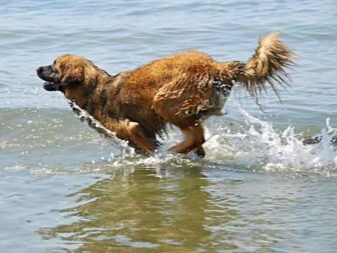
He needs to explain from a young age that a dog is not a toy, even though she dutifully suffers all his mischief.
It should also be remembered that only adult dogs differ in great love and patience towards children. A puppy, having played too much, can overturn a child or repulse his excessive obsession. Many owners of Leonbergers note that dogs are kind to all children without exception, including strangers, and every time they see baby tears they try to comfort the baby.
In this way, Leonberger is an ideal option for both a single person and families with children, and will never let its owners doubt the correct choice of a pet. This is indeed the rare case when one dog harmoniously combines worldly wisdom and prudence, fidelity and devotion, poise and calm, sociability and listening ability, as well as high guard and guard qualities and love for children.
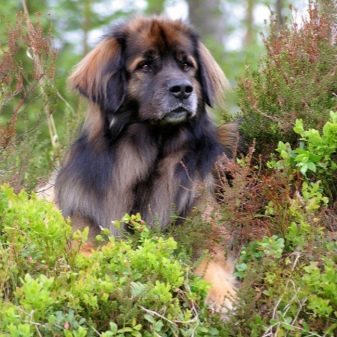
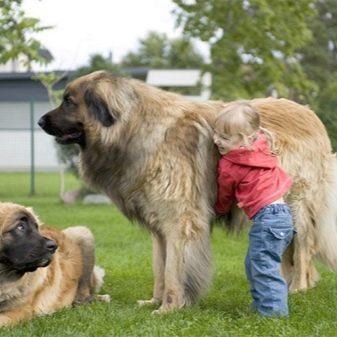
Life span
On average, Leonberger live from 9 to 12 years. Representatives of this breed are distinguished by good health and good immunity. However, like in other dogs of the Molossian section, they often have diseases that are associated with high weight. This category of diseases includes dysplasia of the hip and elbow charters and osteomyelitis - an infectious lesion of bone tissue. Leonberger often suffers from periostitis - inflammation of the periosteum, arthritis and diseases of the gastrointestinal tract. Related diseases include conjunctivitis, cataracts, inversion of the eyelids and skin diseases. Also, cases of oncology, Addison's disease - pathology of the adrenal glands, and hypothyroidism - a lack of thyroid hormones are also common.
As seen, Leonberger predisposed to a whole "bunch" of diseases. Diseases significantly reduce the dog's lifespan and reduce its activity.In order to avoid the appearance of such ailments, a puppy should be purchased in a good nursery, having previously familiarized itself with the medical history of its parents. Such caution, of course, cannot completely exclude the appearance of these diseases, but it can significantly reduce the risk of their occurrence.
In addition, proper nutrition, comfortable living conditions, competent care and timely medical care will help maximize the life expectancy of a beloved pet.

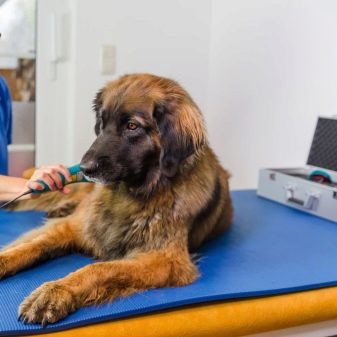
Conditions of detention
Thanks to its thick and long coat, reaching 5-6 cm, the Leonberger is quite suitable for street maintenance. However, due to the high need for dogs to communicate with people, permanent residence on the street is not suitable for them. An ideal option would be a private house, where the animal can spend some part of the time indoors, and at the same time it will not be limited in walks. If it is decided to keep the dog in the apartment, then it should be remembered that because of the large size, it requires space. For small apartments with small hallways, Leonberger is categorically not suitable. You should also know that the dog needs long unhurried walks twice a day. Therefore, if there is no one to walk with her every day for several hours, it is better to opt for some other breed.
If the dog will live in a private house, then in the yard he should arrange a canopy where he can hide from the sun and wait for the rain. It is strictly forbidden to put a pet on a chain, as a Leonberger is a companion dog, which should always be with his family, see and hear all its members, and not sit alone on a leash. In addition, there is no need for this: the dog obeys the owners perfectly and does not run to dirty the garden or trample the beds. If there is a need to limit the Leonberger territorially, then you can fence him a large plot or build a spacious aviary.
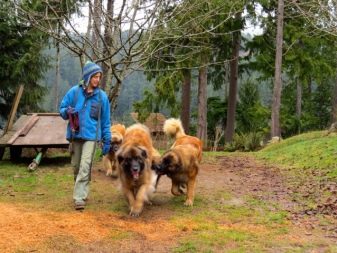

What to feed?
Contrary to the expectations of the owners who first took the Leonberger, he eats no more than a shepherd. You also need to keep in mind that the portions should not be too large, since the dog cannot be overfed. During the period of intensive growth, the puppy is fed 5-6 times a day, when they reach the age of 4 months they switch to four meals a day. From 7 months of age - three times a day, and from 12 months of Leonberger fed twice a day. When calculating the portions for dogs living on the street, it should be borne in mind that in winter they should be a quarter more than in summer.
The Leonberger diet should be half full of any lean meat: beef, rabbit, poultry, or horse meat, and offal can sometimes be used instead. The second half should consist of porridge: buckwheat, rice or pearl barley.
A couple of times a week, you can give boiled sea fish, having previously selected large bones from it, as well as quail eggs.
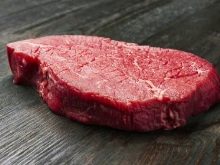

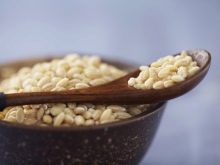
The diet must include boiled and fresh vegetables seasoned with vegetable oil, dairy products - sour cream and cottage cheese, cartilage and large bones. Bone meal, gelatin and vitamin-mineral complexes should be given as an additive to food. In addition, the bowl should always have fresh drinking water.
If it is decided to feed Leonberger with ready-made feeds, then premium compositions for large breeds should be chosenin which vitamins, minerals and nutrients are strictly balanced, and are present in the required quantities. The type of puppy's nutrition should be clarified at the stage of its purchase, and if it is decided to transfer it to another food, then you need to act very carefully. It should also be remembered that mixing artificial nutrition with natural is strictly prohibited, and you need to stay on one of them. The list of prohibited foods for dogs includes salted, fried and smoked dishes, pastries, fatty meat, legumes, sweets, small tubular bones, spicy foods and spices.



How to care?
Leonberger is considered a fairly unpretentious breed, but due to the rich coat requires a little more attention than smooth-haired brethren. The dog needs regular combing, which must be done at least 3 times a week. During moulting, a pet needs to be scratched daily, and if the change of coat is very intense, then 2, or even 3 times a day. To do this, it is recommended to use both traditional brush-brushes, and gloves for combing wool and furminator. Normally, molting occurs twice a year and is seasonal: for the winter the animals “dress”, and closer to spring, on the contrary, they drop their winter coat and acquire softer and more breathable “clothes”.
However, there are frequent cases when a dog's molt changes from seasonal to constant, plunging the owners into slight bewilderment. The reason for this process is too dry air in the room where the pet lives. In this regard, it is necessary to take effective measures to moisten the room, using air humidifiers or installing containers with wet sand and river pebbles. It should be noted here that Leonberger down is an excellent raw material for knitting belts, socks and mittens.



The second important step in caring for a Leonberger is the regular examination of your pet’s ears, teeth and eyes. The eyes are a problem place for most adults, their condition must be treated very carefully, and often wipe them with tampons moistened in special solutions. Ears also need regular cleaning, which should be done as they become soiled. The length of the claws is checked once a month, and if necessary, sheared.
The next important point is the care of dog ammunition. It is necessary that the collar, harness, muzzle and leash are always in a clean condition. To do this, they are washed with antibacterial agents, and leather products are additionally lubricated with cream.
In addition, 2 times a year, pets are bathed using special shampoos for long-haired dogs and conditioner. The washed dog is well dried and thoroughly combed.
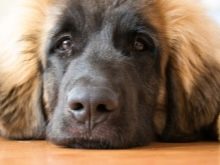

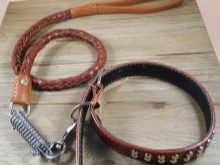
It should also be noted that leonberger love to swim in open waters, and often serve as lifeguards on the beaches. Therefore, if possible, then take the dog to the river as often as possible. Moreover, active games in the water do not give such a large load on the joints as games on land, but at the same time strengthen and develop the muscles of the back and limbs much better.
If there is a forest nearby, then after visiting it, the dog is carefully inspected for ticks, twigs and thorns stuck in the hair, and if necessary, combed. Separately, it should be said about vaccinations. Vaccination of the animal should be carried out in strict accordance with the calendar, which will help to avoid many dangerous diseases. Moreover, puppies that do not have the first two vaccinations cannot go out. Every 3-4 months, as well as 2 weeks before the next vaccination, it is necessary to deworm the pet.



Parenting and training
Leonbergers are very intelligent and intelligent dogs, so even a novice can cope with their upbringing. An important point in training will be socialization, which must begin at 3 months of age. The puppy should be introduced to other dogs and accustomed to walking in busy places. The dog quickly gets used to a large crowd of people and the noise of vehicles, and soon ceases to respond to them.
When training a Leonberger, it should be remembered that ill-treatment and unfair punishment are unacceptable. The puppy captures the mood of the owner on the fly and tries to adapt to it in every way. Many experts agree that Leonberger is one of the few breeds that do not need to memorize certain teams.
The pet perfectly understands simple human speech and instantly responds to the words of the owner.The animal hears the request or order the first time and implicitly fulfills it.


If the dog will live in the yard or on the site, then it must immediately clearly determine the boundaries of what is permitted, and with a strict voice forbid it from approaching, for example, to beds or berry bushes. It is the same in the house: the Leonberger must clearly know where he can and where he cannot, since in the future, when the dog reaches its maximum size, knowing his place will help to avoid many problems. The general course of training can be started in 5-6 months. At the same time, you should communicate with the dog respectfully and calmly. Raise a puppy's voice, and even more so beat it is not necessary - the pet grasps everything on the fly and remembers the team almost the first time. It should also be noted that Leonbergers are dogs with a developed sense of justice, therefore they are very keenly cried out for shouts and undeserved punishments.
However, an adult Leonberger sometimes sins with the fact that the owner’s on-duty commands, such as “sit” or “lie down,” he can execute for a very long time, in the hope that the owner will change his mind and leave him alone. This quality of character is not explained by laziness or lack of understanding, but only by the natural leisurelyness and imposing nature of the breed. But as soon as it comes to some extraordinary situation, the Leonberger instantly mobilizes and begins to act in accordance with his ideas about protecting the owner.

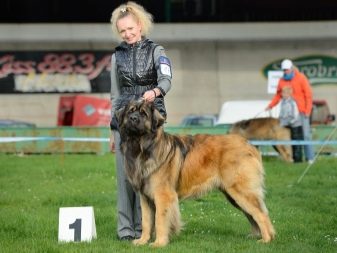
Popular nicknames
When buying a Leonberger in a thoroughbred nursery, the problem with choosing a nickname disappears by itself. Newborns already have a full name, which is compiled taking into account the pedigree and the regalia of its ancestors. However, one should not be upset in this case, since long names, often consisting of several words, are well reduced to short and pleasantly heard nicknames. Sometimes it happens that the breeder determines only the first letter of the nickname, and then it’s up to the imagination and preference of the new owner.
When inventing a name for a Leonberger puppy, it is necessary to consider that a huge animal will grow out of a fluffy and funny teddy bear, therefore, his nickname must be appropriate. For such a dog, it is better to choose monosyllabic or two-syllable nicknames, such as Bucks, Agor, Marven, Sarmat, and for bitches the names Alma, Vita, Shera, Yanka, Farri are suitable.

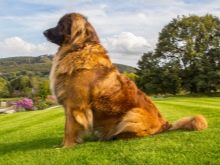
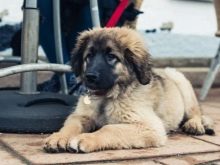
If according to the documents the dog has a too long name, for example, Jonathan or Maximus, then they are usually reduced to Nathan and Max, and a puppy is already taught to them.
It is important that the name is not in tune with common commands. For example, a dog can take the nickname Fars for “face”, and the Accord can mix up its name with the “aport” command. Such confusion can lead to serious consequences, so dogs that are supposed to undergo OKD are not called by these names. It should also be understood that Leonberger is a rather serious dog, and his name must also be serious, so Bagels, Pukhliki, Myatlik and Totoshki are categorically not suitable.
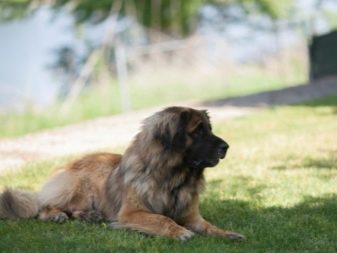
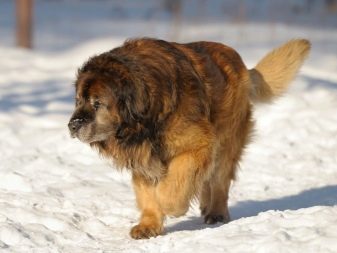
The boy can be called:
- Gold;
- Ador;
- Bart;
- Best
- Damir;
- Eras;
- Zhus;
- Zagray;
- Ilmar;
- Craft;
- Kazar;
- Lars;
- Mars;
- Knox
- Opal;
- Pirate;
- Pilot;
- Roy;
- Aloes;
- Fog;
- Ural;
- Urhan;
- Forest
- Farhat;
- Cheran;
- Storm;
- Yutlay;
- Yardis.
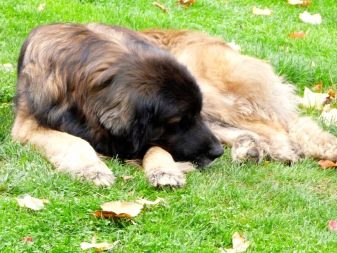
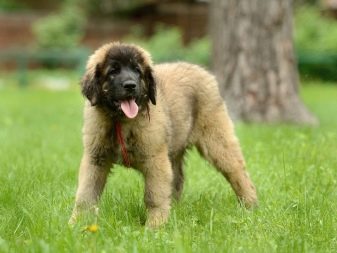
For girls, good names would be:
- Bertha;
- Gladys;
- Eve;
- Winter;
- Irma
- Lima;
- Manon
- Nancy;
- Pella
- Rassi;
- Tilde;
- Urza
- Chloe
- Esta;
- Utah;
- Yassi.
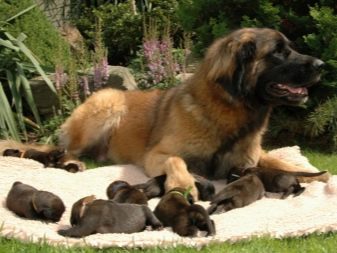

Owner reviews
The owners of the Leonberger give them an excellent characterization. Almost all of them note a sharp mind and extraordinary cleverness of pets, as well as the absence of aggression, not only to strangers, but even to neighboring cats. Many people note the dog’s strong friendship with all the familiar kids whom he tirelessly rolls on his back, and participates in all their games and pranks. The owners also like the lack of unjustified aggressiveness, which is due to the rejection of too vicious individuals and the inadmissibility of further breeding.Attention is also paid to the high security and watchdog qualities, because, despite the good disposition and gentle nature, the dogs can cope perfectly with the protection of property and owners.
Of the shortcomings, huge dimensions and a large amount of wool in the house are noted. Many owners write that with the appearance of such a dog, they have to clean twice a day, and during intensive moulting, do not let the rag and vacuum cleaner out of your hands. Walking with a dog in the rain also creates big problems.
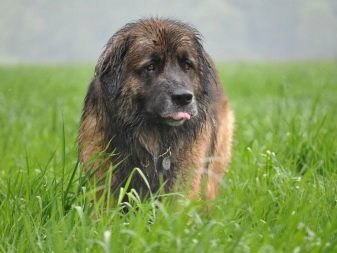

Some owners say that after returning from the street they are forced to close the dog in a room with underfloor heating, and do not let it out from there until it dries and all sand is showered from it.
Pet drooling is also noted, and although their saliva, such as that of bulldogs, does not constantly flow, such dogs tend to shake their faces off after eating and drinking, which is why everything around them becomes splattered with saliva and food debris. About drinking should be said separately: Leonberger drink very sloppy, sweeping, periodically raising his head and brushing his face off the water. Water streams down the stream and literally floods everything around. However, these everyday moments fade before the charm, intelligence and quick wit of the dog, and are not so critical as to refuse to acquire this noble and original breed.

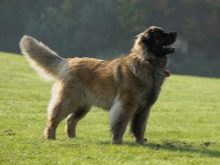
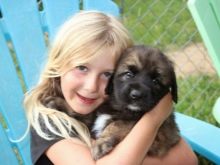
In the next video you will find more information about the amazing breed of dog Leonberger.
